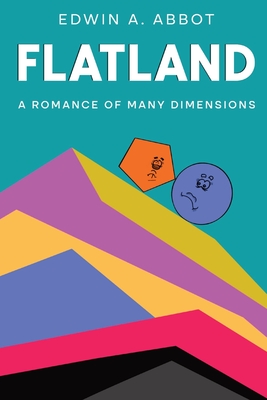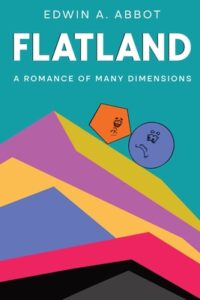Section 11: Concerning our Priests
bySection 11 opens by revealing a tightly guarded secret: the full truth of Flatland is known only to the Chief Circle. This knowledge is passed down only once, from one Chief to his chosen successor, just before death. Even the factory responsible for maintaining this secret takes no chances—its workers are regularly replaced to eliminate any risk of exposure. Each year, those who labored are destroyed, and new individuals are brought in. Such measures reflect the extent to which power in Flatland is maintained through fear, control, and isolation of knowledge. The shadow of past dissent, especially the revolt over the Universal Colour Bill, still looms over the ruling class. That memory fuels the Aristocracy’s determination to keep strict order and suppress curiosity. Any threat to their worldview, no matter how small, is met with overwhelming force, reinforcing a society built on silence and unquestioned hierarchy.
As the narrative prepares to shift focus toward the mysteries of Space, the author acknowledges many fascinating aspects of Flatland that will remain unexplored. Topics like movement without feet, construction without hands, or how rainfall navigates the regions, are briefly teased but ultimately set aside. The richness of life in Flatland—from agriculture to writing systems—remains just beyond the reader’s reach. This restraint is not from oversight, but from necessity, as the central tale now demands undivided attention. By mentioning these omitted details, the author evokes curiosity without losing momentum. It also reminds the reader that Flatland is not a mere thought experiment, but a fully realized world with logic and culture of its own. The depth of this unseen background adds weight to the events that follow, making the impending revelations even more significant.
Before advancing to the key event—his experience with Space—the narrator pauses to highlight the foundational power structure of Flatland. At the top are the Circles, referred to not just as rulers, but as Priests. This dual title conveys both political authority and spiritual reverence, merging governance with near-divine status. Their decisions shape every part of life, and their judgments go unquestioned. The people are taught to obey not only from duty, but from a belief that the Circles possess a wisdom beyond human comprehension. In this way, power is not simply enforced—it is sanctified. Such a system eliminates debate, as questioning authority becomes an act against reason and virtue itself. These leaders are symbols of both law and faith, blurring the line between loyalty and worship. By positioning Circles as almost sacred, the structure ensures long-term obedience through both fear and admiration.
The title “Priest” is not used casually or metaphorically—it reflects how deeply embedded the Circles are in Flatland’s collective psyche. To challenge a Circle is not just political rebellion; it borders on sacrilege. They define the laws of nature, society, and morality, turning their opinions into ultimate truths. Through this theocratic hierarchy, they ensure that their vision of order remains absolute. The Circles aren’t just rulers—they’re the embodiment of what Flatland believes to be perfection. And in a world that equates geometric symmetry with moral value, their circular form becomes a living doctrine. This elevates conformity into a moral obligation and makes deviation appear sinful. Through this structure, not only is behavior controlled, but so is imagination. One cannot dream of something better if every measure of value points back to what already exists.
In any rigid society, those who control knowledge ultimately control destiny. By restricting information and guarding secrets, the Circles craft a world where questioning is rare and truth is rationed. Progress becomes impossible when curiosity is punished and innovation is feared. This chapter lays the groundwork for why the narrator’s journey into higher dimensions is not just scientific—it is revolutionary. It represents a break from the mental chains that define Flatland’s oppressive peace. In this way, the initiation into Space isn’t only about dimension; it’s about liberation. The limits placed on vision, speech, and understanding all begin to erode once one dares to imagine beyond the known. The truth, long buried beneath ceremony and silence, begins its ascent.


